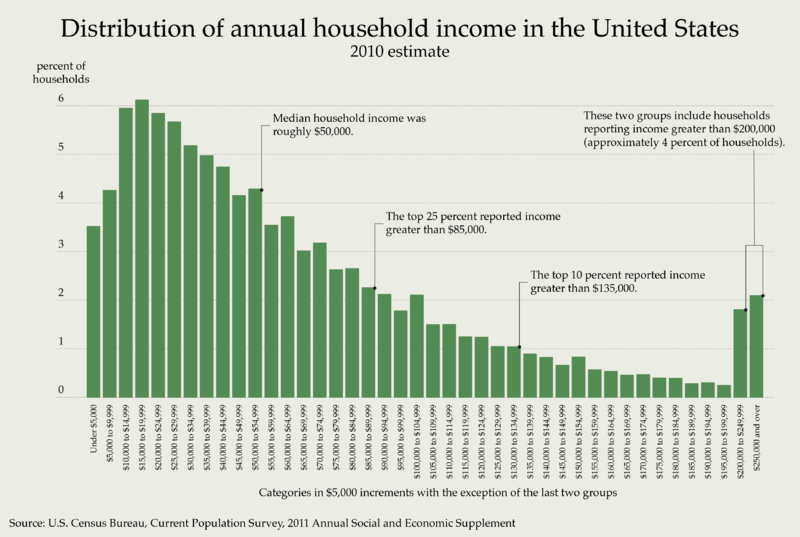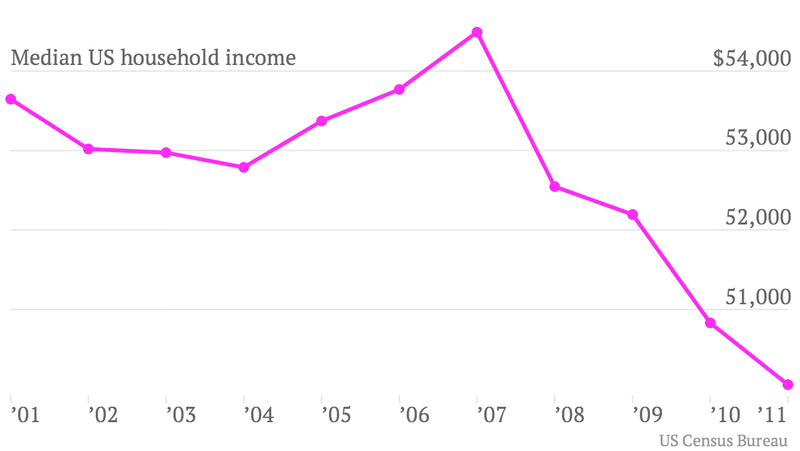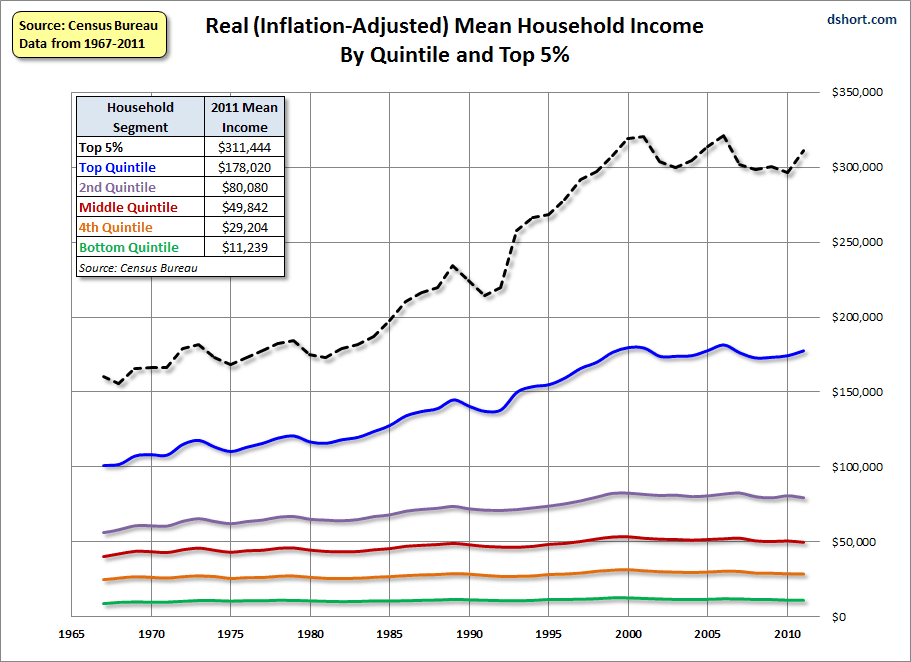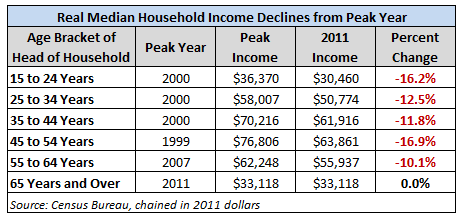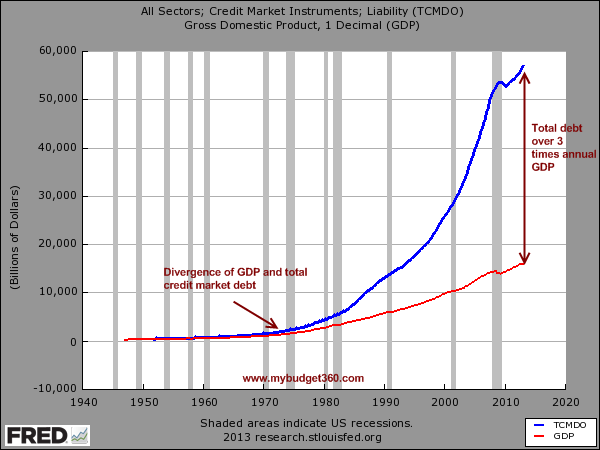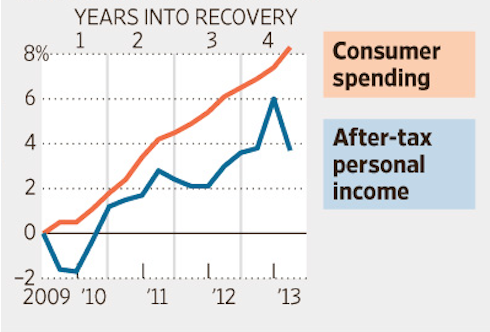by Zig Lambo of
The Energy Report (7/9/13)
The “Bernanke Put,” or promises of quantitative easing, has become
the standard government response to economic uncertainty. But while the
powers that be insist everything’s fine, Sprott Resource Corp. Founder
Kevin Bambrough and COO Paul Dimitriadis see financial deterioration
around the globe. Only one thing is for certain: Taking the contrarian
view provides the best opportunities to buy low and sell high. In this
interview with
The Energy Report,
they explain why they expect energy assets to perform better in the
long haul, cluing us in on a few names they are considering for big
returns.
The Energy Report: How would you characterize the current economic background? Are things really looking better in your view?
Kevin Bambrough: Markets typically peak when fear is low and
complacency is high, and bottom when fear is rampant and people are
extremely worried. The U.S. markets in general have performed quite well
this year, but the U.S. bond markets have started to see a lot of
hiccups. The European debt market still remains on very shaky ground.
The Chinese debt market is now showing major problems in the banking
system and the Japanese are still trying to find a solution to their
debt woes with increased monetization, and have started an aggressive
currency devaluation exercise. Debt levels for governments and
individuals around the world are still at unsustainably high levels
relative to GDP or individual incomes.
Bankers and governments continually lie to the public and pretend
that things are better than they are. If they told the truth, no one
would own a bond or keep money idle in cash. These days, the government
guarantees and what people have referred to as a “Bernanke put” are the
only reason rates are low and the bond market doesn’t crash. The Federal
Reserve must talk tough from time to time and pretend it’s going to
curtail its quantitative easing. The fact is it can’t.
Curtailing quantitative easing would force interest rates back up
significantly, increase the government debt burden and raise the
deficit. At the same time, it would crush the housing market and
over-levered consumers already struggling to pay off their mortgages.
The increased debt burden would bankrupt governments, individuals and
the entire financial system.
TER: So realistically we’re stuck with low interest rates for the foreseeable future?
Paul Dimitriadis: There’s no way that rates, in my view, are
going to rise anytime soon. The Federal Reserve knows it can’t allow
them to rise materially. Americans may have an egocentric view that
everything is fine because the S&P 500 is at a new high. Globally,
the situation is not that great. The emerging markets have performed
terribly this year and we’re starting to see unrest in a number of
places around the world as social situations deteriorate rapidly, mainly
in Brazil, Turkey, Egypt and such. All is certainly not well and I
don’t expect the situation to get better anytime soon.
TER: When will everybody realize this is all a big charade?
KB: I often try to predict the catalyst that breaks the bond
bubble. Government bonds are primarily held by mega funds, and sovereign
banks. The banks around the world do it because they can lever up and
play the
carry-trade game. Most governments do it to keep their currencies low and support their export economies.
If interest rates rose, banks would be bankrupt, so they have no
interest in seeding their demise. Governments try to pretend that
deficits are going to eventually be brought under control, and
continually make statements that there is no inflation, so they can
prevent their currencies and bond markets from collapsing. Whenever
economies slow as a result of higher interest rates, consumer confidence
drops and interest rate-sensitive sectors like housing slow. Central
bankers, or shall we say central planners, will become more aggressive
with quantitative easing and bring the rates down to try to kick-start
the economy again. That’s the delicate game they have to continue
playing.
I expect this will continue for many years until the systemic U.S.
trade deficit stops being funded by foreigners. It could be a few months
from now or a few years, but eventually foreigners will come to
understand the stupidity of buying U.S. government bonds to try to help
their economies. I believe this is the Achilles heel of the system, and
the U.S. dollar reserve-based global financial system’s days are
numbered. The U.S. dollar will lose its reserve currency status when the
Chinese, Japanese, Koreans and other major purchasers of U.S. bonds
decide it’s not in their best interest to continue doing so. For the
longest time, China and other countries have viewed purchasing U.S.
bonds as an effective way to keep their currencies relatively stable.
But at some point they’re going to give up on the foolishness of
supporting the U.S. trade deficit and focus more on their domestic
economy, rather than on competitive devaluation to support exports. The
fact is, they collectively have been giving the U.S. over $500 billion
worth of goods and services per year for over a decade. They will recoup
little from these “loans” in the future. When they try to cash in their
bond holdings, they will find there is no buyer other than the Federal
Reserve, which will deliver them freshly printed currency that will only
be accepted in the U.S.A. because no foreigner will want to accumulate
more. When the trillions sent overseas come home to the U.S., inflation
will explode and trade restrictions will rise.
TER: So how do we convert this into an investment strategy from a contrarian viewpoint?
KB: It is difficult to try to determine the best asset class
to own. You also have to pick a time horizon and focus on what the world
is going to look like 10–20 years from now and evaluate the asset
classes that could give the best rate of return. Ultimately, we always
come back to what we believe—that food, energy and other base and
precious metals will do better in the long run. The key to investing in
cyclical resource sectors is buying when they’re depressed. Now we’ve
got a situation where they’re extremely depressed in many sectors.
TER: What are you doing at Sprott to deal with the current
market environment for energy-related investments? Has your approach
changed since your last
interview?
KB: Precious metal equity values have come down substantially
this year and we’re starting to see some very good value and
opportunities in that sector. As for base metals, we still think there’s
more potential downside.
We’re quite optimistic on developments in the natural gas market.
Last year’s injection season marked the smallest inventory increase in
the modern history of the natural gas market. The withdrawal season was
also the third largest on record, and that was with relatively average
winter weather. At around $4 per thousand cubic feet ($4/Mcf), demand is
going to continue to grow faster than supply and that price will
eventually be pushed higher. That will create value for companies like
Long Run Exploration Ltd. (LRE:TSX), which we own, and which has significant natural gas exposure as well as stable profitability from its oil production.
PD: Purely gas-focused drilling activity is almost down to
zero. We need to see higher prices to generate drilling demand from
producers, which I think we will begin to see this year.
KB: Another sector that’s been quite depressed is coal, mostly
as a result of low natural gas prices. A lot of mines have had to close
or go through a restructuring. It looks like we’re getting closer to a
historic bottom in coal equity valuations and so we’re looking around
for opportunities to get some long-term exposure to that sector.
PD: As an example,
Arch Coal Inc. (ACI:NYSE) is down from $28 to below $4 in the past two years. It was up over $70 around five years ago before the financial crisis.
KB: During a boom in any sector, a lot of the big companies
are tempted to take on debt and continue acquisitions. Arch Coal still
has a significant amount of debt. There are other coal companies that
will certainly survive. We may not be incentivized to bring a new coal
mine into production today, but there’s
great incentive for us to buy coal mines that have long life reserves and wait.
TER: You mentioned Long Run, which we talked about during your last interview. Where do you think that one’s going?
PD: The company merged last fall (Guide Exploration Ltd. and
WestFire Energy Ltd. combined to form Long Run) and recently completed
its first couple of quarters as a new entity. Production is going well
and cash flow is meeting expectations. It’s focusing on oil production
exclusively this year due to the oil and gas pricing environment.
There’s a lot of room to pay a dividend later this year or next perhaps,
which both we and the market would welcome seeing. Long Run’s gas
reserves are significant, so there is huge optionality on the gas side.
Overall, it’s a solid story and it’s discounted to its peers, probably
because it’s a new name and there’s currently a lack of fund flows into
the general Canadian energy market.
Looking at the various metrics relative to its peer group, you can
safely conclude that it’s trading at a 30–40% discount. If the sector
gets revalued because money starts flying back into it, things can go
higher from there. The optionality in the gas market could take the
stock even higher.
TER: Sprott Resource Corp. completed that nice deal on its
Waseca Energy Inc. holdings last year when it sold out to Twin Butte
Energy after four years.
KB: We were very pleased with the performance of that company.
Again, we stuck with our strategy of investing in a sector while it was
depressed. We bought into heavy oil when it was no bid in Canada,
formed the company and ultimately were able to monetize it when margins
were significant and the company had grown from zero production into a
+4,000 barrels per day company. That delivered another big win for our
shareholders with a nearly $70 million profit.
PD: Along that same vein, we’ve invested in a drilling company
based out of Houston, Texas called Independence Contract Drilling just
over a year ago. It drills shale formations and, again, we invested in
the sector when it was generally out of favor, and built the company up
from book value to probably having above 12 rigs in production by the
end of next year. I expect that at that time we will be able to
capitalize on its strong cash flow and look for some sort of
monetization, whether it’s an IPO or sale of the business.
TER: Another area we haven’t talked about yet is uranium. I know you’re into
Virginia Energy Resources Inc. (VUI:TSX.V; VEGYF:OTCQX). What’s the update on that name?
KB: The uranium market is similar to coal. Natural gas has
weakened valuations and demand in all energy sectors. Fukushima also
really upset the short-term demand and created a very negative sentiment
in the nuclear space. But demand for physical uranium for nuclear power
production is going to grow over the next decade or two and mine supply
will fall short with $40 per pound ($40/lb) uranium. When we look at
overall planned, permitted nuclear facility growth and as well as
extensions of the existing facilities, we see robust demand and we see
very little supply coming on the market.
PD: We will see large supply shortfalls emerging in the next
few years. The market’s going to have to catch up on funding mines,
because funding has been scarce over the last few years. We believe a
uranium price north of $75/lb is going to be required to balance supply.
Although the Commonwealth of Virginia has not yet passed legislation
that would provide a framework for permitting uranium mining projects,
we are hopeful it will in the near future. At that point the company
would be greatly positively revalued.
KB: Regardless of the uranium market, Virginia Energy
Resources is one of the largest undeveloped uranium projects in the
United States, and major producers will likely try to take out Virginia
Energy Resources when the permitting framework is in place.
TER: Where you see opportunities in the fertilizer/potash markets?
PD: Potash prices have softened a bit lately. We’ve invested in one potash company that produces SOP potash, called
Potash Ridge Corp. (PRK:TSX; POTRF:OTCQX).
It is developing a project in Utah, we think has very favorable
economics based on the preliminary economic assessment. A prefeasibility
study is expected in the next couple of months, which should give
greater clarity on that project. The project’s key benefits are the
byproducts in the deposit, which lower the production cost dramatically.
It should be one of the lowest-cost producers of SOP potash, which is a
growing market globally. We’re optimistic that someone is going to have
an interest in an offtake agreement and perhaps assist with the
financing in the next 12–18 months.
The phosphate market has been more stable than the potash side. In
the U.S., there is some risk for domestic producers due to potential
shortfalls in their mines over the coming year. The phosphate market
could be in very good shape over the next five years as those companies
seek to replace their production. We’re quite optimistic about one of
our investments in a company called
Stonegate Agricom Ltd. (ST:TSX, SNRCF:OTCPK), which is developing its potash project in Idaho. That should come into production in late 2014 or 2015.
TER: Do you have any final thoughts you’d like to leave with us?
PD: The resource sector, generally, is probably the most
out-of-favor it has been in a long, long time. If you’re ever going to
put money to work in this sector, right around now would probably be an
opportune time to do so.
KB: This is the kind of market that really allows those who are willing to step up and invest to make a lot of money.
TER: Thank you gentlemen, for your updates and insights today.
Kevin Bambrough
founded Sprott Resource Corp. in September 2007. He is a seasoned
financial executive with more than a decade of investment industry
experience and is a recognized leader in the commodity investing space.
Since 2009, he also has served as president of Sprott Inc., one of
Canada’s leading asset managers, which has more than $8 billion in
assets under management. Between 2003 and 2009, he held a number of
positions with Sprott Asset Management, including market strategist, a
role in which he devoted a significant portion of his time to examining
global economic activity, geopolitics and commodity markets in order to
identify new trends and investment opportunities for Sprott Asset
Management’s team of portfolio managers.
Paul Dimitriadis
is Chief Operating Officer for Sprott Consulting and Sprott Resource
Corp., where he evaluates and structures transactions, coordinates and
conducts due diligence and is involved in the oversight of subsidiaries
and managed companies. He serves on the board of directors of two of
Sprott Resource Corp.’s subsidiaries, Stonegate Agricom Ltd. and Long
Run Exploration Ltd. Prior to joining the Sprott group of companies, he
practiced law at Blake, Cassels & Graydon LLP. Dimitriadis holds a
Bachelor of Laws degree from the University of British Columbia and a
Bachelor of Arts degree from Concordia University.
Want to read more
Energy Report interviews like this?
Sign up
for our free e-newsletter, and you’ll learn when new articles have been
published. To see a list of recent interviews with industry analysts
and commentators, visit our
Interviews page.
DISCLOSURE:
1) Zig Lambo conducted this interview for
The Energy Report and provides services to
The Energy Report as an independent contractor. He or his family own shares of the following companies mentioned in this interview: None.
2) The following companies mentioned in the interview are sponsors of
The Energy Report: Virginia Energy Resources Inc. Streetwise Reports does not accept stock in exchange for its services or as sponsorship payment.
3) Kevin Bambrough: I or my family own shares of the following
companies mentioned in this interview: Sprott Resource Corp. I
personally am or my family is paid by the following companies mentioned
in this interview: Sprott Resource Corp. My company has a financial
relationship with the following companies mentioned in this interview:
Sprott Resource Corp. I was not paid by Streetwise Reports for
participating in this interview. Comments and opinions expressed are my
own comments and opinions. I had the opportunity to review the interview
for accuracy as of the date of the interview and am responsible for the
content of the interview.
4) Paul Dimitriadis: I or my family own shares of the following
companies mentioned in this interview: Sprott Resource Corp. I
personally am or my family is paid by the following companies mentioned
in this interview: Sprott Resource Corp. My company has a financial
relationship with the following companies mentioned in this interview:
Sprott Resource Corp. I was not paid by Streetwise Reports for
participating in this interview. Comments and opinions expressed are my
own comments and opinions. I had the opportunity to review the interview
for accuracy as of the date of the interview and am responsible for the
content of the interview.
5) Interviews are edited for clarity. Streetwise Reports does not
make editorial comments or change experts’ statements without their
consent.
6) The interview does not constitute investment advice. Each reader
is encouraged to consult with his or her individual financial
professional and any action a reader takes as a result of information
presented here is his or her own responsibility. By opening this page,
each reader accepts and agrees to Streetwise Reports’ terms of use and
full legal disclaimer.
7) From time to time, Streetwise Reports LLC and its directors,
officers, employees or members of their families, as well as persons
interviewed for articles and interviews on the site, may have a long or
short position in securities mentioned and may make purchases and/or
sales of those securities in the open market or otherwise.
Streetwise –
The Energy Report
is Copyright © 2013 by Streetwise Reports LLC. All rights are reserved.
Streetwise Reports LLC hereby grants an unrestricted license to use or
disseminate this copyrighted material (i) only in whole (and always
including this disclaimer), but (ii) never in part.
Streetwise Reports LLC does not guarantee the accuracy or thoroughness of the information reported.
Streetwise Reports LLC receives a fee from companies that are listed
on the home page in the In This Issue section. Their sponsor pages may
be considered advertising for the purposes of 18 U.S.C. 1734.
Participating companies provide the logos used in
The Energy Report. These logos are trademarks and are the property of the individual companies.
101 Second St., Suite 110
Petaluma, CA 94952
Tel.: (707) 981-8204
Fax: (707) 981-8998
Email:
jluther@streetwisereports.com




